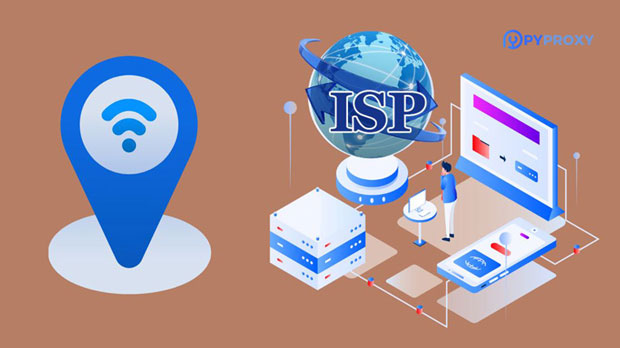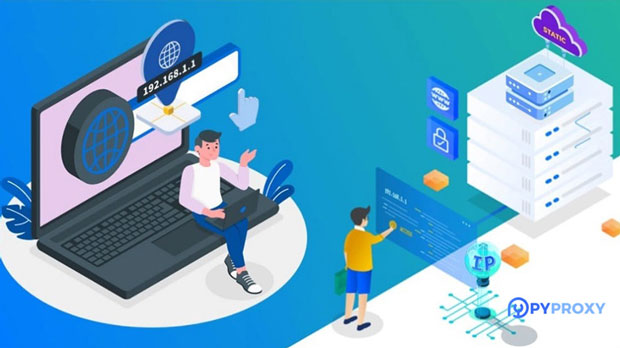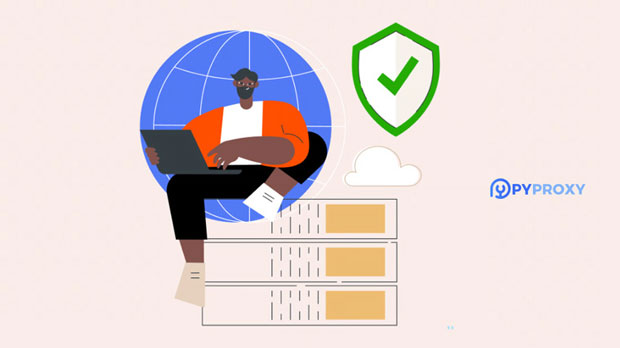Security analysis of residential proxies, who is better, Squid Proxy Server or PyProxy S5?
The increasing reliance on online activities has driven the demand for proxy servers to ensure privacy, anonymity, and security. Among various types of proxy servers, residential proxies are considered highly effective in mimicking real user behavior, which is essential for tasks like web scraping, ad verification, and bypassing geo-restrictions. Two notable options in the residential proxy market are Squid Proxy Server and PYPROXY S5. Both offer distinct advantages, but when comparing them in terms of security features, performance, and overall usability, a detailed analysis is required to determine which one provides better protection and reliability for users. This article will delve into the security aspects, technical strengths, and limitations of Squid Proxy Server and pyproxy s5, helping you make an informed choice. Understanding Residential Proxy SecurityResidential proxies route internet traffic through real user devices, making it appear as if the requests are coming from legitimate users. This offers a higher level of anonymity compared to datacenter proxies, which are easily detectable and blocked by websites. However, while residential proxies provide a cloak of anonymity, security is still a concern, as the proxy server’s ability to safeguard user data and ensure the integrity of communication is crucial.A key consideration for proxy users is whether their provider offers sufficient protection against data breaches, IP leaks, and exposure to malicious attacks. The security features of residential proxies are heavily influenced by the software and infrastructure they are built on. This brings us to the comparison of two leading proxy solutions: Squid Proxy Server and PyProxy S5.Squid Proxy Server: A Robust, Yet Traditional ChoiceSquid Proxy Server is one of the oldest and most established proxy solutions. It has been widely used for both residential and datacenter proxy configurations, offering high scalability and customization. Squid’s security features are robust, thanks to its open-source nature, allowing users to tailor its setup to their security needs. Security Features of Squid Proxy Server1. Access Control: Squid supports ACL (Access Control List) configurations, enabling administrators to define specific rules on who can access the proxy, based on IP addresses, user authentication, and even the type of requests. This level of control allows for a personalized security setup, making it difficult for malicious actors to gain access. 2. SSL/TLS Encryption: Squid Proxy supports SSL/TLS encryption, which secures the communication between the client and the proxy server. This ensures that sensitive data, such as login credentials or financial information, is not exposed to eavesdropping during transmission.3. Traffic Filtering: Squid has the ability to filter traffic, which helps block malicious websites, ads, or content. This is particularly useful in preventing harmful traffic from reaching the end-user, enhancing the overall security of the browsing experience.4. Logging and Auditing: Squid maintains logs of user activities, which can be beneficial for tracking suspicious activities. However, this feature can be a double-edged sword, as excessive logging might increase the risk of data leakage. It's important for users to configure log storage and retention policies carefully.Limitations of Squid Proxy ServerDespite its many advantages, Squid Proxy does have limitations when it comes to handling modern security challenges. One notable concern is its complexity. Squid requires in-depth technical knowledge to set up and maintain, which may pose challenges for non-technical users. Moreover, its reliance on open-source modules means that vulnerabilities may arise, especially if patches and updates are not regularly applied.PyProxy S5: A New Contender with Advanced Security FeaturesPyProxy S5 is a more recent solution, designed with modern security needs in mind. While Squid Proxy has established itself as a stalwart in the proxy server world, PyProxy S5 brings a fresh approach to residential proxy security. This server is highly focused on providing secure, scalable, and reliable proxy services for those looking for an easy-to-use yet powerful alternative.Security Features of PyProxy S51. Advanced IP Rotations: One of the standout features of PyProxy S5 is its automatic IP rotation mechanism, which ensures that users' IP addresses change frequently. This is an effective technique for preventing detection by websites that track user behavior based on static IP addresses, enhancing security against data profiling.2. End-to-End Encryption: PyProxy S5 offers built-in end-to-end encryption, ensuring that data is securely transmitted across the entire communication chain, from the client to the proxy server. This minimizes the risk of data leaks and man-in-the-middle attacks.3. Two-Factor Authentication (2FA): Unlike Squid, PyProxy S5 integrates an additional layer of security with two-factor authentication. This feature ensures that only authorized users can access the proxy service, reducing the risk of unauthorized access to sensitive information.4. Anti-DDoS Protection: PyProxy S5 comes with enhanced DDoS protection, making it resilient to large-scale attacks. This feature is particularly important for users who rely on proxies for high-volume operations, as it ensures that the service remains uninterrupted during traffic surges.5. Customizable Security Profiles: PyProxy S5 offers users the ability to create custom security profiles, adjusting the level of protection based on their specific use case. This flexibility allows businesses and individual users to tailor the security setup according to their needs.Limitations of PyProxy S5While PyProxy S5 boasts a wealth of security features, it is not without its drawbacks. One of the potential downsides is its relatively higher cost, as the advanced features come with a premium. Additionally, PyProxy S5 may not offer as much flexibility in terms of configuration as Squid, especially for highly specialized use cases. Users who require extensive customization might find PyProxy S5 limiting in comparison.Comparing Squid Proxy Server and PyProxy S5Both Squid Proxy Server and PyProxy S5 offer strong security features, but they cater to different needs. Here’s a comparison to help you choose the best option based on your security requirements:1. Customization: Squid Proxy offers greater customization options, allowing users to set up specific security policies and filters. However, this flexibility comes at the cost of complexity, as users need advanced technical skills to manage the server properly. PyProxy S5, on the other hand, is more user-friendly and streamlined, with customizable security profiles but limited advanced configuration options.2. Encryption: Both Squid Proxy and PyProxy S5 provide encryption for secure communication. Squid’s SSL/TLS encryption protects data during transmission, while PyProxy S5 takes it a step further with end-to-end encryption, ensuring better protection against potential threats.3. Anonymity and IP Management: PyProxy S5 excels in IP rotation, making it harder for websites to detect automated traffic or block users. Squid Proxy can offer IP rotation as well but requires more manual setup and does not rotate as seamlessly as PyProxy S5.4. User Access Control: Squid Proxy is known for its granular access control features, including ACLs and authentication mechanisms. PyProxy S5, while offering two-factor authentication, may not be as configurable in terms of user management.5. Scalability and Performance: Both proxies are scalable, but PyProxy S5 is designed with modern internet traffic demands in mind, making it more suitable for high-volume operations. Squid Proxy, while robust, may require more resources and technical support as traffic scales.Conclusion: Which Proxy is More Secure for Residential Use?When it comes to security, both Squid Proxy Server and PyProxy S5 offer valuable features, but they cater to different user needs. If you are looking for a customizable and well-established solution with advanced access controls, Squid Proxy may be the better choice. However, if ease of use, modern security features like automatic IP rotation, and built-in DDoS protection are your priorities, PyProxy S5 stands out as the more secure option for residential proxy use. The decision ultimately depends on your specific security requirements, technical expertise, and the scale at which you intend to use the proxy service.
2025-03-03

























































